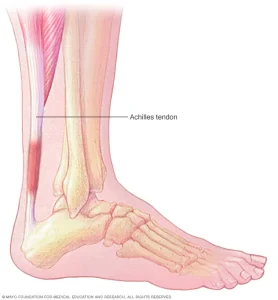The wide range of applications of PRP has been noticed in use after plastic surgery procedures. The therapeutic strategy is to:
Quick Links
DENTISTRY
Platelet-rich plasma in dental procedures is applied for soothing effects after tooth extractions, healing and supporting the effects of dental surgeries
Tooth extraction is a common dental procedure associated with significant postoperative pain, discomfort and in many cases prolonged bleeding. PRP at injury sites might be able to promote gingival healing and the regeneration of periodontal soft tissues and accelerating bone repair. Moreover, it plays the important role in restoring the neural pathway and thus repairing the lack of periodontal mechanoreceptors after tooth extraction. PRP then has further application in regenerating the nerve fibers and reconstructing the neural feedback pathways around osseointegrated implants.
Platelet-rich plasma according to case studies proves as it may be beneficial in some cases as an adjunct to graft materials for the treatment of periodontal intrabony defects.
The use of PRP has been proposed in the management of bisphosphonate-related osteonecrosis of the jaw (BRONJ) with the aim of enhancing wound healing and bone maturation.
Platelet-Rich Plasma combats developing diseases like periodontitis, which is an inflammation of the tissue around the teeth, often causing shrinkage of the gums and loosening of the teeth.

The Platelet-Rich Plasma in dental procedures may be is mainly to:
reduce bleeding
enhance soft
tissue healing
accelerate bone regeneration
periodontal intrabony defects
accelerate tissue healing
nerve regeneration
combating diseases within oral areas
acceptance of the implant.
SURGEON
SURGERY
The ease with which these preparations are used might be helpful in many surgical procedures. The clinical use of platelet-rich plasma has been proposed as a way of obtaining high concentrations of growth factors involved in tissue healing and regeneration after the invasive surgical performance. It is used to promote the process of tissue repair, improving the quality of healing and healing time. The growth factors present in PRP are capable of forming a fibrin clot, promoting fibroblast proliferation and up-regulating collagen synthesis in the extracellular matrix.
In the case of surgical reconstruction of the anterior cruciate ligament, we can intraoperatively inject the PRP into the graft to accelerate and improve the healing process. In bones regeneration, it improves the process of natural healing by stimulating the capacity of bones restoration, as well as inheriting regenerating capacity while the of lack the ability to spontaneously heal appears. Independently, fat transplantation seem to have a role in regenerative medicine; however, the addition of PRP to fat transplants may synergistically enhance graft survival by a number of mechanisms.

The areas of PRP treatments and recommendations:
- Reconstructive procedures
- Muscle and bones
- regeneration
- Tissue vascularization
- Decreasing after surgery inflammation
- Tissue, cartilage regeneration
- Skin healing and reneval
- Fat graft survival
PLASTIC SURGERY
improve and accelerates tissue or bone healing
maintaining contour restoration
improves the maintenance and function of fat graft
Autologous fat grafting is used extensively in reconstructive and aesthetic plastic surgery for the correction of soft-tissue volume defects.

The areas of PRP treatments and recommendations:
- Plastic surgery
- Reconstructive procedures
- Fat graft (stimulating the proliferation of adipose tissue stem cells)
ORTHOPEDIC
In orthopedics and traumatology, 4e PRP triggers the regenerative processes in all joint tissues at the same time (joint surfaces, synovial fluid, capsular ligaments, bone, muscle and cartilage tissue) due to platelet growth factors. Autologous platelet-rich plasma injections help inhibit inflammation and improve nutrition and tissue repair, by oxygenation.
4ePRP triggers the accelerated restoration of the musculoskeletal system, reduces rehabilitation periods after injuries and surgery, and thus restores the patient’s freedom of movement without pain.
In combination with other therapies, it allows the reduction of the amount of medication administered or the complete elimination of it, minimizing the toxic effects associated with its prolonged usage. In addition, autologous plasma therapy reduces the treatment time by half.

HOW PRP THERAPY HEALS ORTHOPEDIC INJURIES
The science behind PRP therapy is this: When you incur an injury, your body sends platelets to the site of injury to facilitate the healing process. What scientists are trying to do is to harness your body’s natural healing ability and boost it.
PRP therapy makes use of the clotting component found in your blood – the platelet. However, platelets are not just for clotting per se. They also contain growth factors that are essential for the healing of injuries and the regrowth of the damaged area.

CONDITIONS TREATED BY PRP THERAPY
Musculoskeletal injuries that have been reported to respond well to PRP therapy include:
- Tendon tears
- Muscle injuries
- Ligament injuries
- Achilles tendonitis
- Jumper’s knee
- Muscle strains
- Bursitis






And since PRP therapy can help to speed up the healing process, it is also recommended to patients who undergo surgery to address orthopedic conditions. PRP can help make the patient’s recovery time faster and more efficient.
The advantages of 4e PRP in orthopedics and traumatology:
- Eliminating muscle spasms and painful sensations
- The synovial fluid is regenerated
- Reducing the pressure on the affected joints of the bones and increasing the distance between them
- In addition, 4e PRP therapy can also help delay or eliminate the need for joint-replacement surgery. If the injury is healed or the pain is greatly reduced, surgery is usually no longer necessary.

About Us
We bring best treatment options in medical aesthetics, cosmetic, dermatology to meet and exceed the needs of practitioner in India.
We Provides
(1)
INNOVATION
HIGH EFFECTIVENESS BIOCOMPATIBILITY
(2)
Best Quality Products- Provides International Quality Standard Products with affordable prices.
(3)
24/7 Service-We provides quick after sales support.
(4) We Provides OEM products manufacturing for small business.
